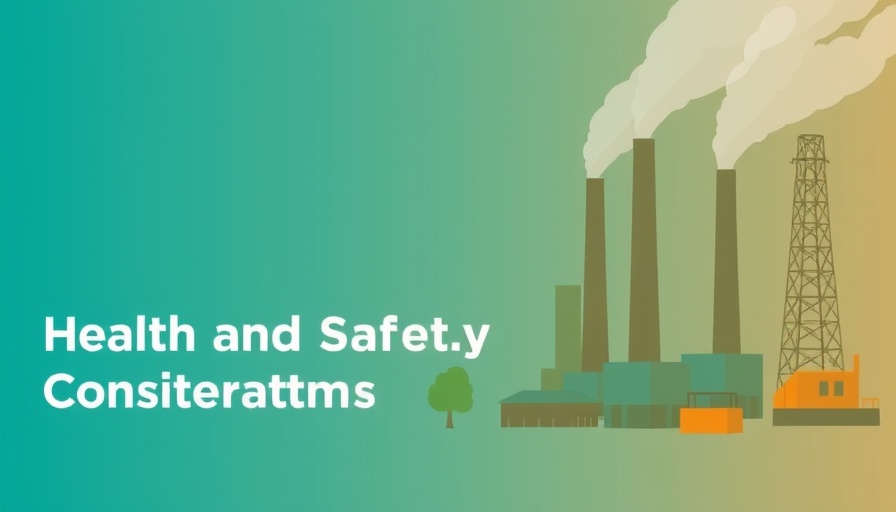
Understanding the Environmental Impact of Energy Production
As the world evaluates energy production methods, there’s a notable spotlight on their environmental impact. Energy production, especially through fossil fuels like coal and oil, poses various risks not only to the planet but also to human health. This may come as no surprise to business owners and property developers—entities that directly impact and are affected by the health of their environment. The air pollution generated can lead to serious health concerns, while methods like fracking have raised significant welfare debates.
Health Risks Encountered in Energy Production
Energy production can introduce hazardous pollutants into our environment. According to the Environmental Protection Agency (EPA), air pollutants associated with power generation are detrimental, particularly for vulnerable groups, including children and the elderly. Issues such as respiratory diseases arise from prolonged exposure to harmful emissions. For facility managers and developers, understanding these health risks is crucial, especially when designing spaces that enhance employee well-being in commercial settings.
Socially Conscious Business Practices to Consider
In this age of sustainability consciousness, opting for environmentally friendly energy solutions can demonstrate corporate responsibility. Elements like the transition to renewable energy sources—solar, wind, and hydroelectric—are not only ideal for reducing carbon footprints but also hold potential financial advantages in the long run. For cost-conscious businesses, these investments could translate to lower energy bills and attract a socially aware clientele.
Practical Strategies for Sustainable Design in Construction
For property developers, integrating sustainable building practices is essential. This may include leveraging energy-efficient materials and designs that minimize environmental footprints. As Carlos Martinez highlights, combining aesthetics with functionality can lead to significant overall business performance improvements. When working on a project, consider case studies showcasing before-and-after scenarios that underscore successful implementations of sustainable practices.
The Future of Energy Production: Insights and Trends
Future predictions for the energy sector indicate a move towards more sustainable practices. New technologies are emerging, alongside a shift in regulations favoring renewable energy solutions. This presents opportunities for innovative practices in commercial construction. For business owners, understanding these trends can mean the difference between staying ahead of the competition or facing obsolescence.
Take Charge of Your Energy Impact
Understanding the environmental impact of energy production is not just an ethical consideration but a catalyst for business strategy and innovation. Socially conscious approaches coupled with sustainable practices in construction can create healthier spaces while promoting well-being. As a business owner or property developer, now is the moment to act—evaluate your energy sources, consider sustainable options, and explore how these choices can transform your business environment.
 Add Row
Add Row  Add
Add 




Write A Comment